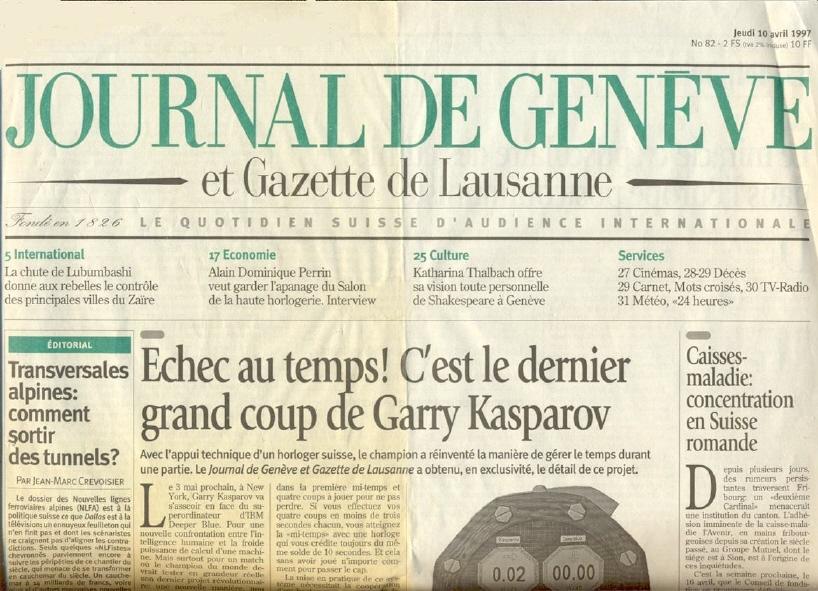
Edward Winter
How often has chess been the main front-page story in a newspaper? Here is one instance, from the Journal de Genève et Gazette de Lausanne of 10 April 1997:

The news report concerned Kasparov’s involvement with the Swiss company Audemars Piguet in the development of a clock for use in his upcoming match against Deep Blue.
(4444)
Olimpiu G. Urcan (Singapore) sends a copy of the front page of FrankLeslie’s Illustrated Newspaper, 3 May 1879:
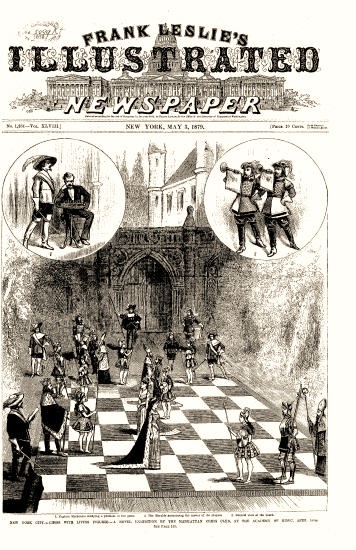
Mr Urcan mentions that the display was discussed, although without the above illustration, on pages 125-141 of Thomas Frère and the Brotherhood of Chess by Martin Frère Hillyer (Jefferson, 2007). We recall that the picture was given on page 24 of the February 1931 American Chess Bulletin and that page 25 quoted the newspaper’s report on the game, which was played in New York on 16 April 1879.
(5182)
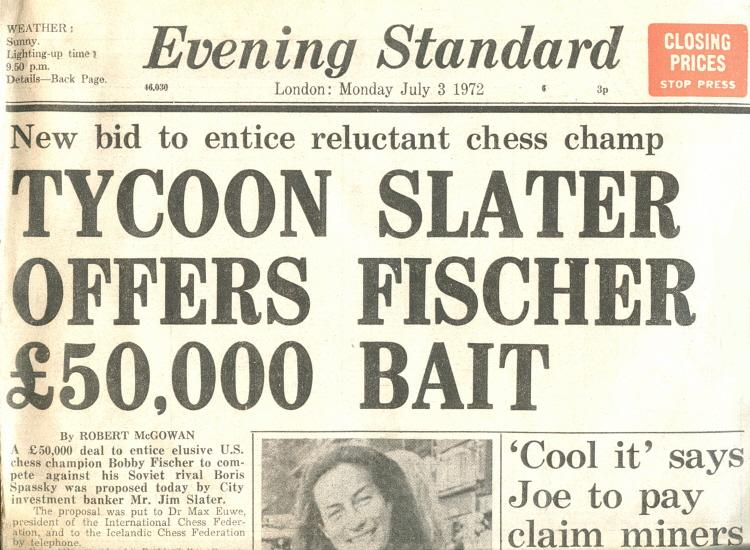
For Leonard Barden’s account of the episode, see pages 26-27 of CHESS, November 1997.
(5198)
The front of the dust-jacket of the original 1954 edition of Fred Reinfeld’s book How to Play Chess, with a shot of the famous game in which Alexander defeated Bronstein at Hastings:
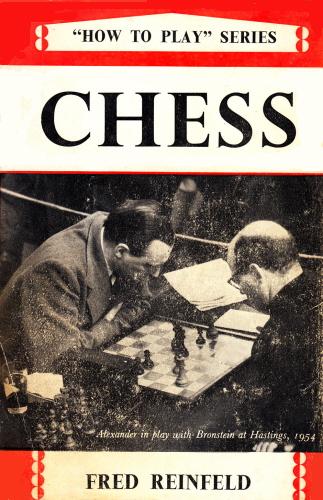
(7569)
The result was front-page news in the Manchester Guardian, 9 January 1954, as shown below, with, on page 10, a photograph in addition to further coverage:

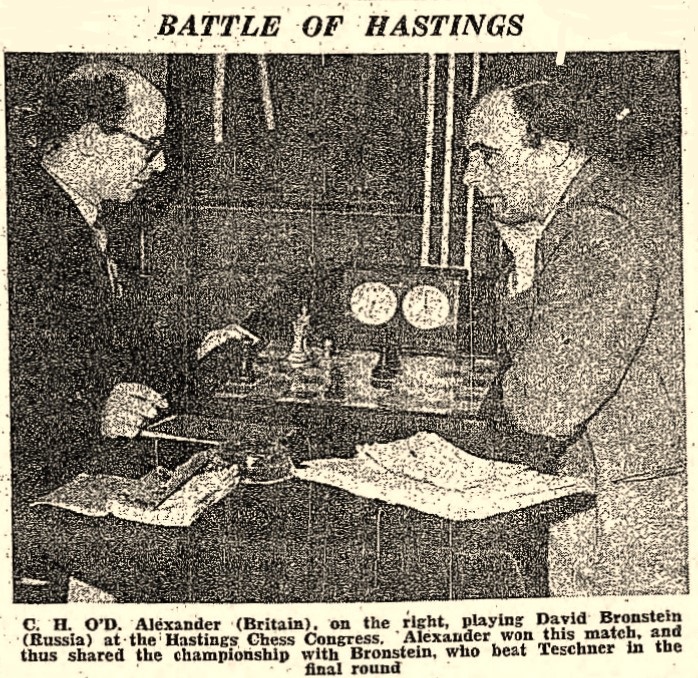
A photograph submitted by Olimpiu G. Urcan:
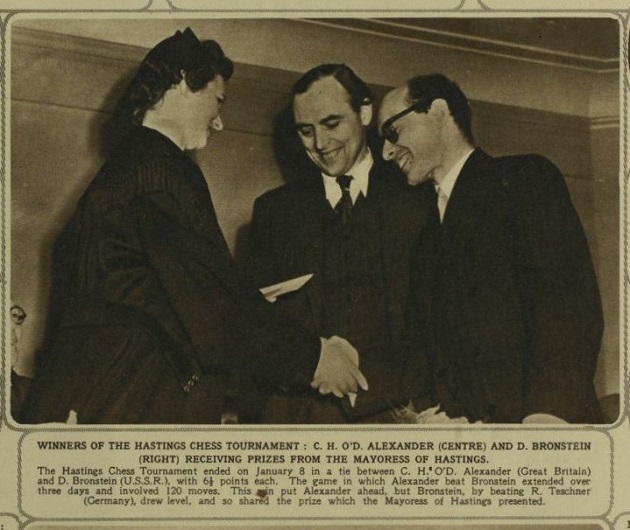
(Illustrated London News, 16 January 1954, page 93
(9020)
From page 105 of The Amazing Book of Chess by Gareth Williams (Godalming, 1999), in the section on Capablanca:
‘His losses became so rare that on one occasion the front page headline of the New York Times read “Capablanca Loses”.’
That sounds even more dramatic than what Harold C. Schonberg wrote on page 166 of Grandmasters of Chess (Philadelphia and New York, 1973):
‘At the New York, 1924 tournament he lost to Réti. So unexpected was that loss, so unbeatable had Capablanca been, that the New York Times commemorated Capablanca’s loss in a headline: CAPABLANCA LOSES/1ST GAME SINCE 1914. (The Times for once was inaccurate, for Capablanca had lost a game to Chajes in New York in 1916.)’
So, just how eye-catching was the newspaper’s front-page story on 23 March 1924, the day after the Cuban’s loss to Réti?
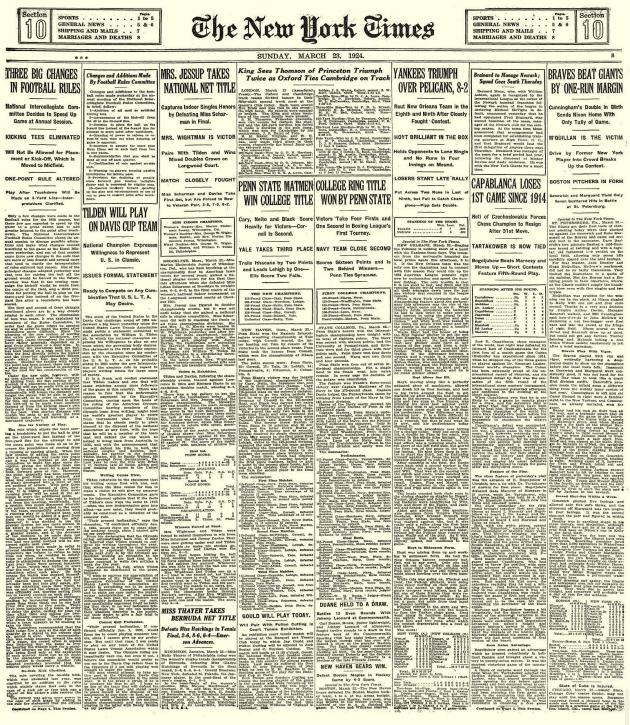
Contrary to the statement in the New York Times, the Cuban’s unbroken run (apart from the loss to Chajes in 1916) stretched back to his defeat by Tarrasch, and not Lasker, at St Petersburg, 1914.
(8205)
C.N. 8205 showed the report of Capablanca’s loss to Réti on the front page of the sports section of the New York Times, 23 March 1924.
There was no mention of the game on the newspaper’s very front page.
(8217)
Below is page 1 of the Los Angeles Times, 1 September 1972:
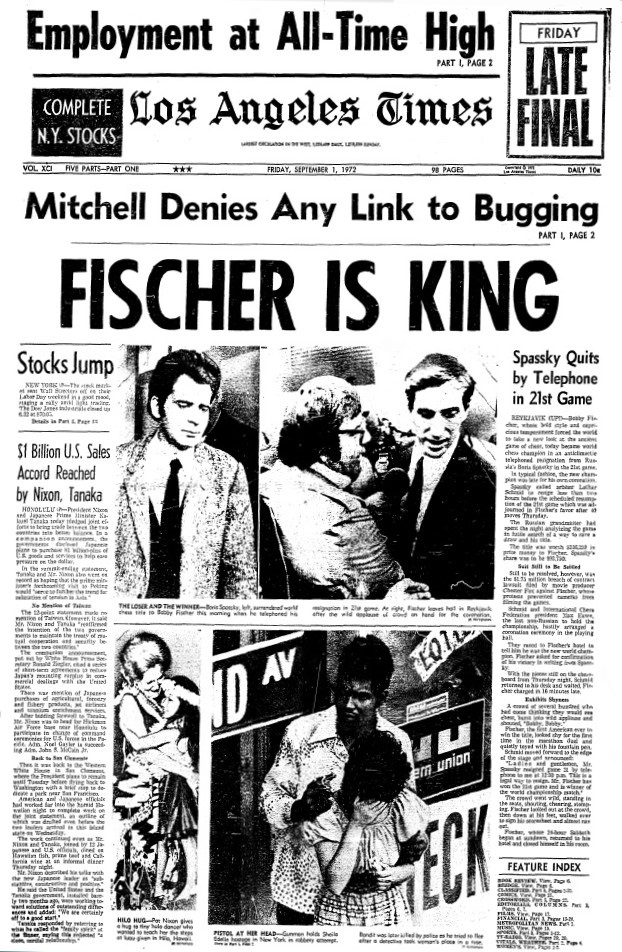
(9004)
Below, from our archives is the front page of the Journal de Genève of 2 September 1997:
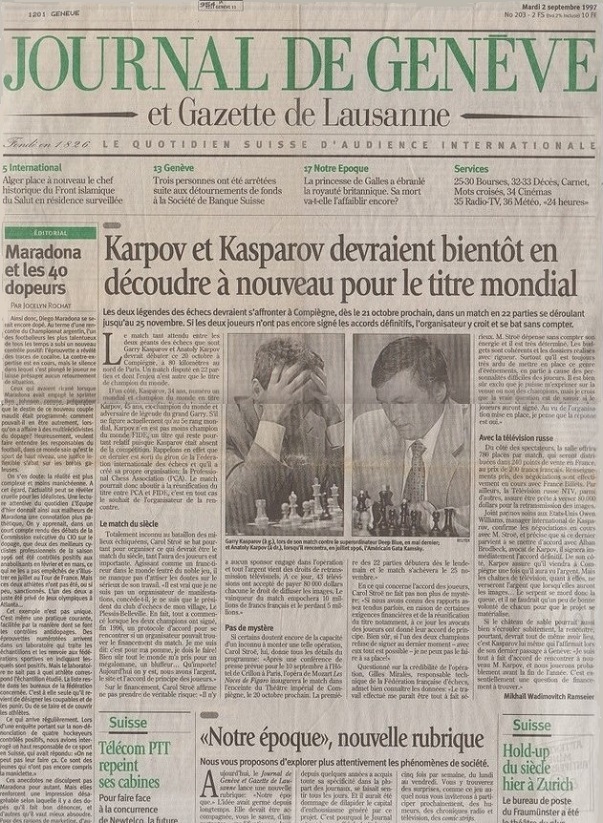
The report, by Mikhaïl Wadimovich Ramseier, affirmed that a FIDE/PCA reunification contest between Kasparov and Karpov (‘the match of the century’) was likely to take place in the Théâtre impérial de Compiègne, France from 20/21 October to 25 November 1997. The organizer was named as Carol Stroë, the president of a village chess club (Le Plessis-Belleville), and he claimed to be putting forward prizes of ten million French francs for the winner and five million for the loser. There would be no sponsorship for the 22-game match. Funding would come from selling the pictures to 43 television companies for $80,000 each, and from audiences in the 780-seat theatre (200 French francs per ticket).
Following a statement from Kasparov’s representative, Owen Williams, a report on page 10 of the Journal de Genève, 6 September 1997 made it clear that the whole thing was off or, better say, had never been on.
(9062)
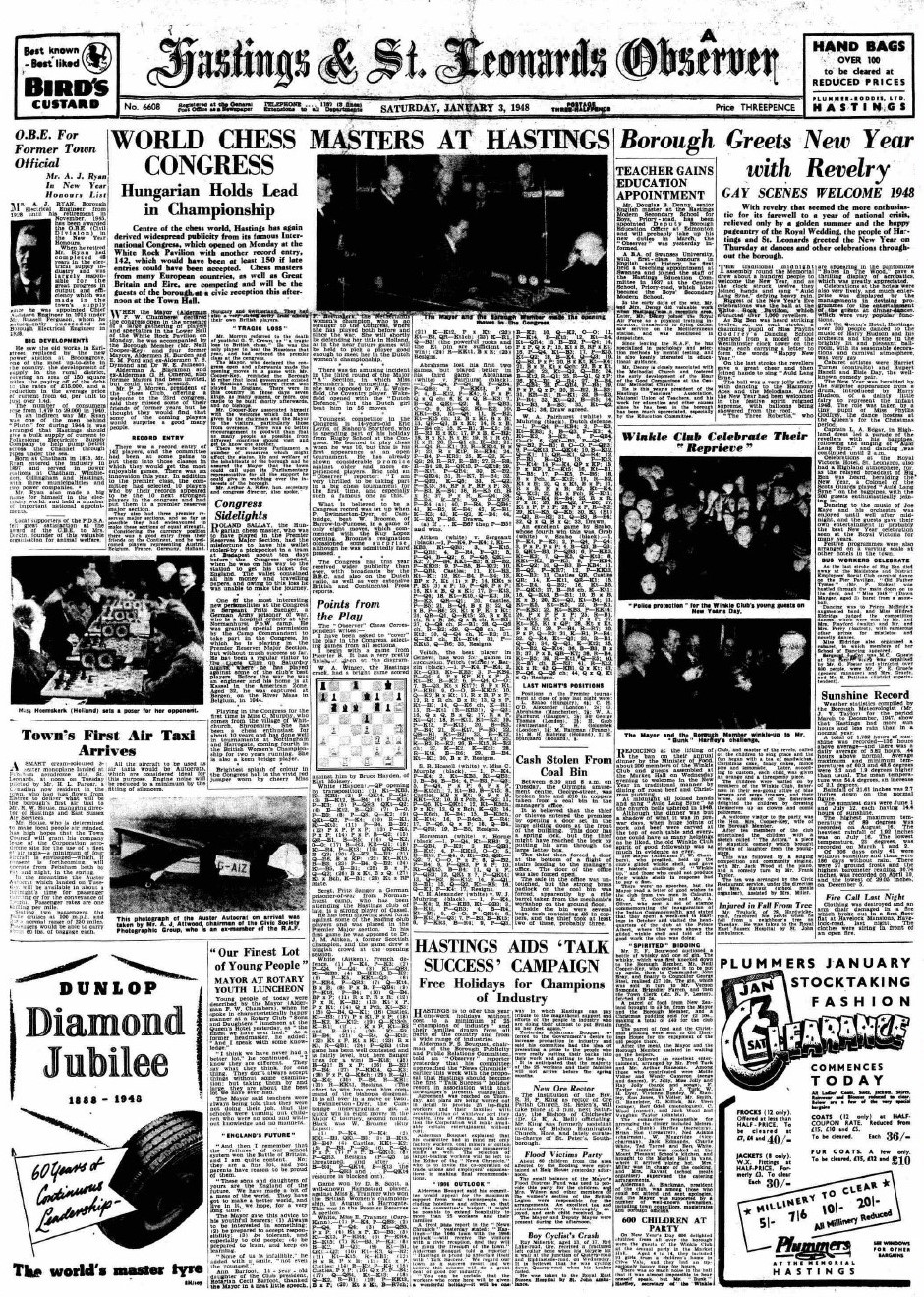
From a report on the 1962-63 Hastings congress on page 99 of CHESS, 26 January 1963:
‘The Daily Express gave one mention to the congress, reporting that A.T. Watson in making a move, split his trousers.’
The item was on the front page of the Daily Express, 3 January 1963:

(10794)
Avital Pilpel (Haifa, Israel) writes:
‘The front page of La’Merhav, 27 October 1957 has been brought to my attention by Moshe Roytman:
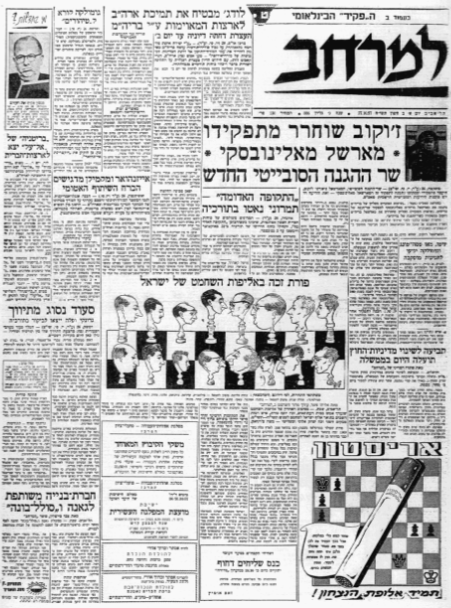
The caricatures by Buchwald are of all the players in that year’s national championship, in Tel Aviv, and below it is an article about the tournament by Eliyahu Fasher. The headline reads, “Porat won Israel’s chess championship”.
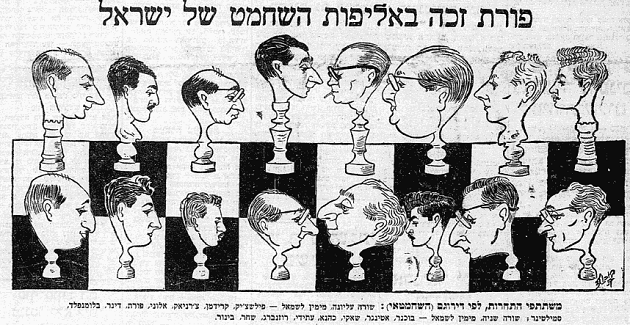
The players are (top row, from right to left) Pilschik, Kraidman, Czerniak, Aloni, Porat, Dyner, Blumfeld, Smiltiner and (bottom row, from right to left) Buchner, Etinger, Shaki, Kahane, Atidi, Rosenberg, Shahar, Binur.
The advertisement is for Ariston cigarettes, and the text explains why the position – after “Black has just conquered a piece with his queen” – is stalemate.’

(10978)

(12161)
To the Chess Notes main page.
To the Archives for other feature articles.
Copyright: Edward Winter. All rights reserved.